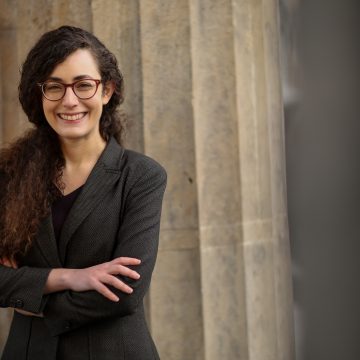PLAY
A purim-shpil
[A Purim Play]Synopsis
Children march through the room with noisemakers, and go on stage to sing a song about being Purim-shpiler (Purim players). The teacher asks them what they want to perform, and two children unroll a Megiles Ester [Scroll of Esther]. The children say they want to perform the story contained in the scroll, and go off to the side as the characters from the Purim story are introduced in turn over the course of the play: Haman, King Ahasverus, Queen Esther, Mordechai (sometimes a child acknowledge the actual name of the child playing the biblical figure, typically the children introduce the biblical figures as a chorus). Haman explains why the Jewish minority is a threat (to the Persian Empire), and vows to get rid of them with the help of foolish King Ahasverus, while also promising to whip Mordechai. King Ahasverus enters and describes his great wealth and vast domain, saying that his greatest treasure is Queen Esther. The children agree about Esther’s great beauty, which Ahasverus proceeds to describe. Esther enters and talks about her magnificent palace, but admits she feels like an outsider there. The children remind her not to forget her Jewish origins. Mordechai enters and tells her about Haman’s evil decree of a genocide of the Jews, begging her to intercede with the king. Esther agrees to do so, and asks that the Jews join her in fasting beforehand. Esther invites Ahasverus and Haman to a feast with good wine and joyful dancing. They agree to come––Haman adds: “if I’m not there, then my name’s not ‘Haman’.” At the feast (complete with servants, musicians, dancers, etc.), Ahasverus tells Esther he will grant her whatever she wants, even if it is half his kingdom. She asks her husband to spare her people from Haman’s evil plan. The king calls Haman over to explain himself, and Haman says he didn’t know Esther was Jewish. A servant points out the gallows Haman had built, and the king decides it will be used to execute Haman. The chorus of children declares the truth of the story and the importance of telling how the Jewish people defeated their enemies.
